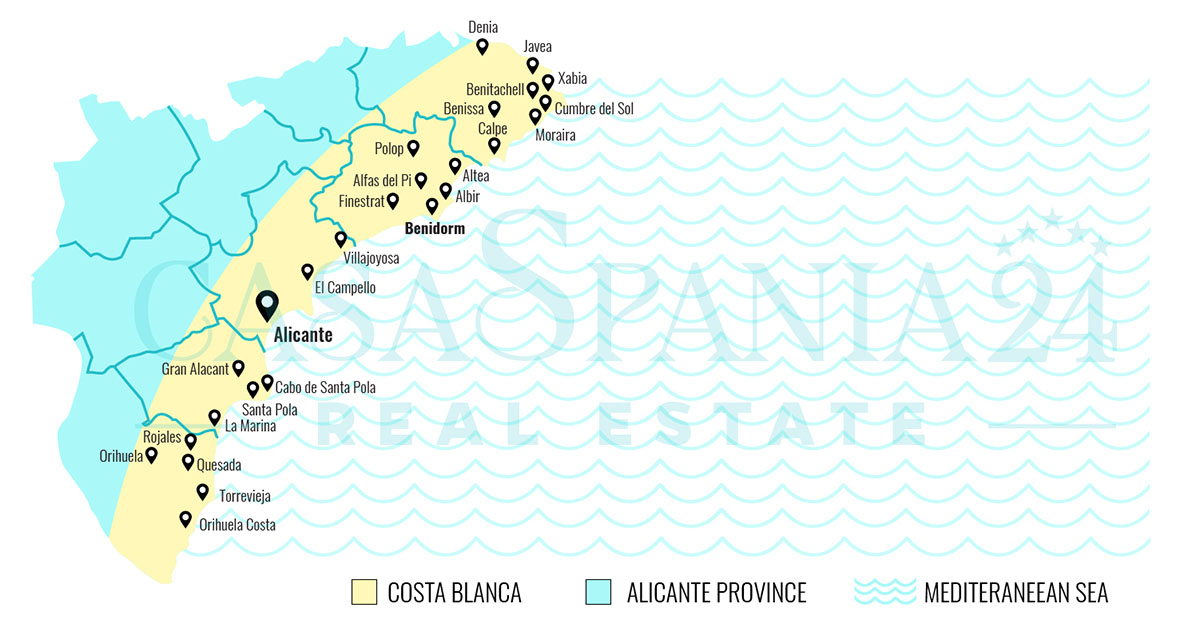Denia is a cosmopolitan and charming town located along the Mediterranean coast, where the sun shines almost all year round. The mild climate, the long beaches with fine sand and the rocky coves over a length of 20 km make Denia an ideal holiday destination.
Benissa is located in the north of the Costa Blanca, close to the A-7 motorway, just over an hour's drive from Alicante airport. Between Calpe and Moraira, the coast offers a succession of quiet coves, with a spectacular landscape dominated by imposing cliffs and high mountains.
Javea is a small and historic town, without high-rise buildings, which offers a quiet and relaxing atmosphere. The clear, warm waters of the Mediterranean embrace the beaches and coves of the town, and the locals are known for their hospitality.
Moraira is a pretty coastal resort set in a picturesque mountainous area in the north-east of the region. Conveniently located between Alicante and Valencia airports, Moraira offers unspoilt natural scenery and a calm atmosphere, perfect for exploring the nearby villages.
Calpe, once a small fishing village, is now a popular tourist destination, located in the heart of the Costa Blanca in the Valencia region. Easily accessible from the A7 motorway and the N332 national road, the town is around an hour from Alicante airport and attracts visitors with its beaches and famous natural landmark, the Peñón de Ifach.
Benidorm, located in the heart of the La Marina Baixa region, is one of the most popular tourist resorts in Spain. Its excellent beaches, variety of hotels and restaurants, and numerous leisure activities make it a favourite choice for tourists from all over Europe.
Alicante, centrally located on the Mediterranean coast, is a vibrant city with a long maritime history. The promenade along the quay, decorated with marble in shades of red, cream and black, evokes the waves of the Mediterranean and offers a pleasant experience for strolls under the shade of palm trees.
Torrevieja is located about 40 minutes south of Alicante airport. Although it is not a typical tourist package resort, the city is very popular with Spaniards who spend their summer holidays here. The surroundings consist of modern urbanisations, with swimming pools and gardens, and the beaches with fine sand and crystal clear waters are truly spectacular.
Santa Pola is a small fishing port just 20 minutes south of Alicante airport. Famous for its variety of landscapes – from remote mountains to wild dunes – the city retains the authentic charm of the region.
Guardamar del Segura has a population of just over 11,000 and has played a strategic role throughout history as the guardian of the Segura River. Situated on a hill overlooking the Vega Baja, the town has been inhabited by various cultures, attracted by its favourable location.
Orihuela, the capital of the region of the same name, stretches from the coast to the interior of the peninsula. It is an important administrative centre that includes picturesque villages, three golf courses, two marinas and the popular beaches of La Zenia and Dehesa de Campoamor, alongside vast agricultural lands.


 En
En









